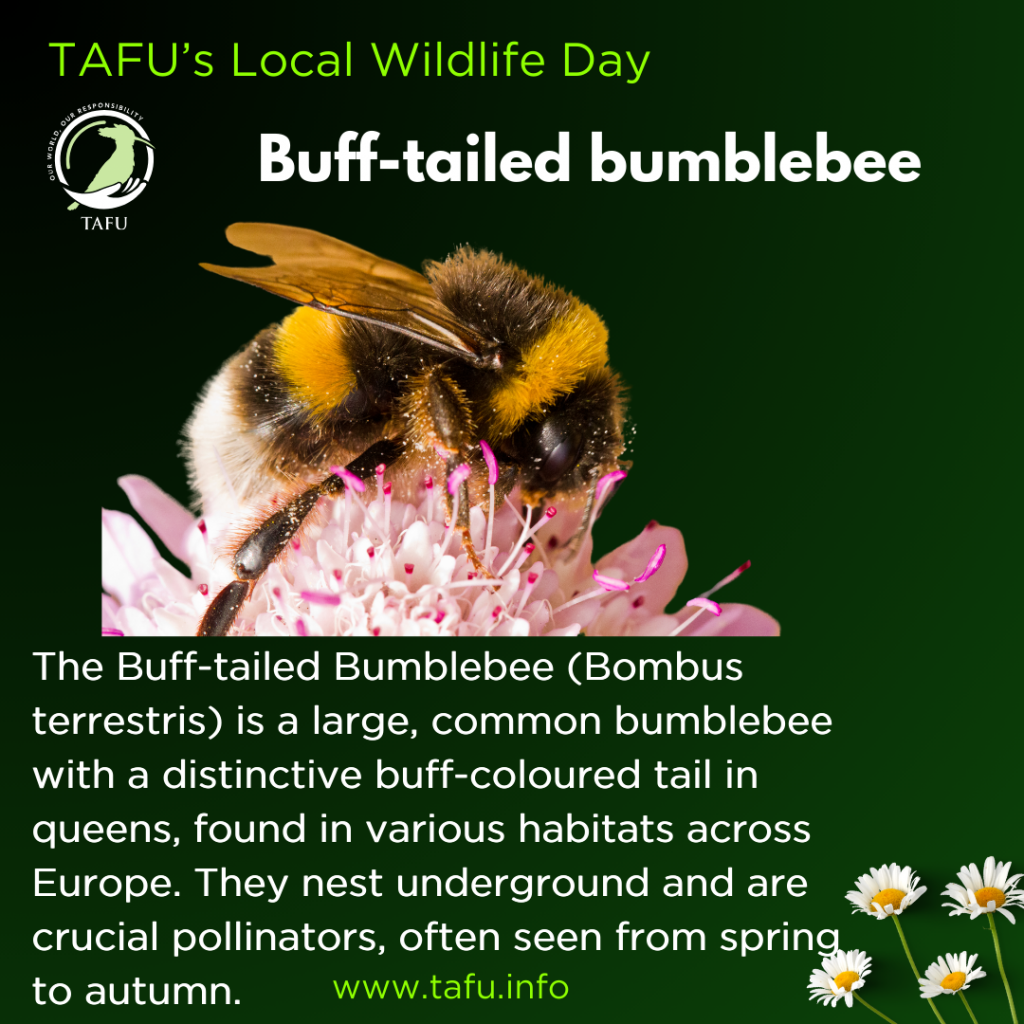Buff-tailed Bumblebee
As part of the countdown to TAFU’s Local Wildlife Day on the 11th of July – Species no. 30.
Stay tuned – 13 more days and 13 more species until then!
The Buff-tailed Bumblebee (Bombus terrestris) is one of the most widespread bumblebee species in Europe. The species is named for the queens’ characteristic buff-coloured tail, whereas workers and males typically have white tails. The queens also feature golden yellow bands on their thorax and abdomen.
These bees are eusocial, living in colonies that can contain anywhere up to 600 individuals. They typically nest underground in abandoned rodent burrows or other cavities. The colonies are initiated by a solitary queen in the spring, who lays eggs that hatch into worker bees. These workers then take over the duties of foraging and caring for subsequent broods.
Buff-tailed Bumblebees are active from early spring through late autumn, with some populations, particularly in southern UK and urban areas, being active throughout the winter. They forage on a wide variety of flowers, favouring those with open structures that are accessible with their short tongues. This species is also a significant pollinator in greenhouses and has been introduced to various countries for this purpose, although it has become invasive in some regions.
We can all avoid using pesticides, keep our wild flowers as much as possible, and provide nesting sites by leaving areas of undisturbed soil.

